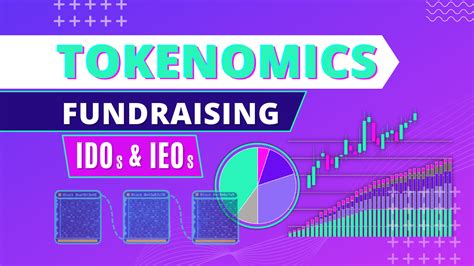Creating durable tokenomical models with AI technology
In the field of cryptocurrency, Tokenomy plays a crucial role in the development of the project’s basic structure and dynamics. This includes a variety of aspects such as supply and demand, token distribution and economic stimuli to create a stable ecosystem. However, tokenomic models are often criticized for simplified or opaque, causing ineffective resource distribution and unpredictable market behavior.
Traditional Tokenomic models are largely based on manual analysis and assumptions that can cause errors and discrepancies. In addition, AI technology integration in Tokenomics offers a promising solution to create more durable and durable systems. In this article, we will study how AI technology can improve tokenomy models by allowing organizations to create more accurate and efficient models.
Challenges with traditional Tokenomic models
Traditional Tokenomic models are based on manual analysis with several disadvantages:
1
Limited data availability : Without sufficient data, it is difficult to create a comprehensive model that accurately reflects market behavior.
- Lack of Transparency : Manual analysis can be opaque, forcing stakeholders to challenge the assumptions and logic of the model underlying the model.
3
Incorrect Error : The human judgment and interpretation of the model can make mistakes, causing suboptimal distribution of resources.
AI -based Tokenomic Models Benefits
AI technology offers a number of benefits to creating more durable tokenomy models:
1
Data -based insights : Machine learning algorithms can analyze a huge amount of data from different sources, providing accurate predictions and insights.
- consistency and automation : AI can quickly and consistently process large data sets, reducing the time needed to update the model.
3
Improved Transparency : AI -led models are more transparent, allowing stakeholders to understand the basis and logic.
How can AI enhance tokenomic patterns
Several AI methods can be used to improve the tokenomical models:
1
Machine learning (ml) algorithms : ML can be used to analyze historical data, predict market trends and identify models.
- Natural language processing (NLP) : NLP can help obtain appropriate information from text -based data, such as news articles or social media records.
3
Graphic Neuron Networks (GNNS) : GNNS can model a complex relationship between chips and assets, allowing more precisely predicting.
AI -driven Tokenomic Model Example
Let’s consider an example of a hypothetical cryptocurrency project marking model. The aim is to provide the market value of the marker based on various factors, such as supply and demand, market capitalization and mood analysis.
Model Development
- Data collection

: Summarize historical data from a variety of sources, including cryptocurrency exchange, news articles and social media.
- Data Prepare
: Clean and pre -process data to remove noise and insignificant information.
3
Function Engineering : Remove the appropriate features from pre -processed data, such as supply, demand, market capitalization and mood analysis.
- Model Training : Train the ML algorithm using the function of engineering data to predict the value of the marker.
AI -driven Tokenomic Model Example
Here is a simple example of how you could introduce to the AI -guided model:
“ Python
Import NUMPY as NP
Load data from different sources
Data = PD.Read_CSV (‘Market_data.csv’)
Pre -processing data
X = data.drop ([‘target’], ass = 1)
y = data [‘target’]
Feature engineering
X [‘Supply’] = x [‘Supply’]. Apply (Lambda X: Float (X) / 1000)
X [‘request’] = x [‘request’].